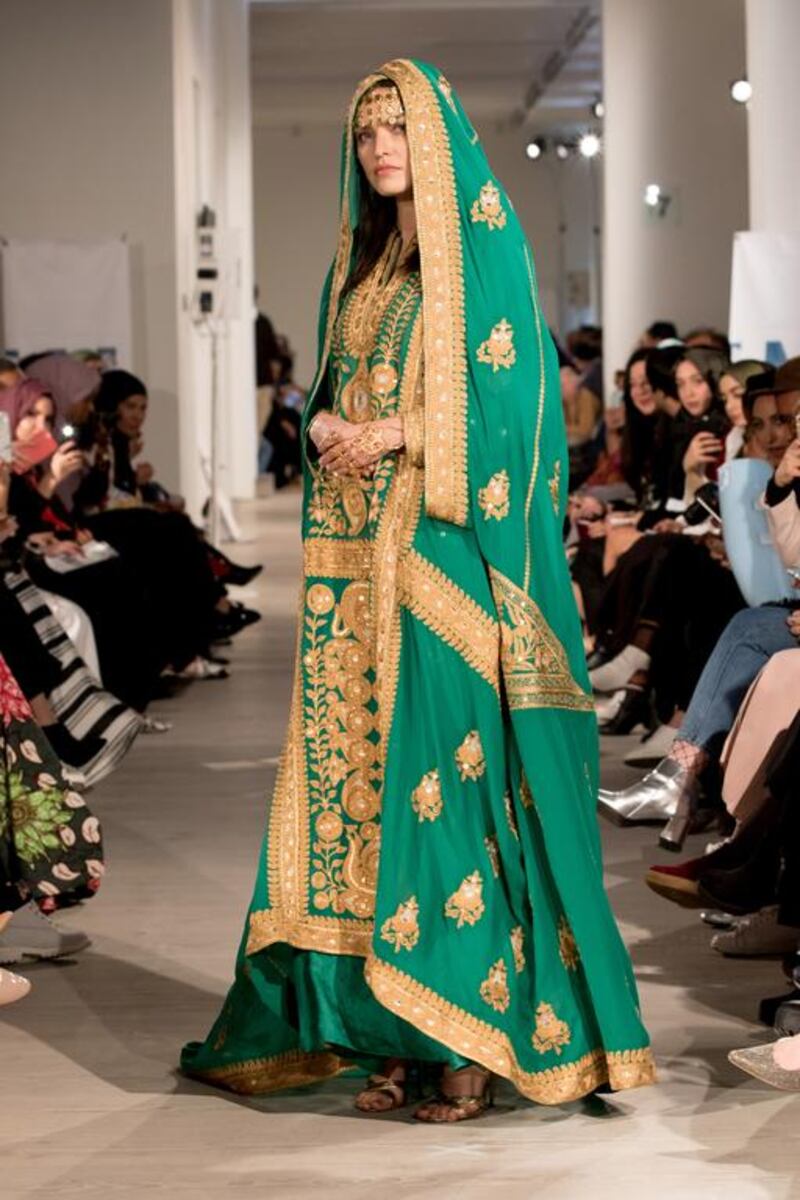Making dresses in vintage styes, threaded with embroidery fashioned centuries ago, Art of Heritage is reviving traditions and at the same time breaking stereotypes and empowering women.
Based in Riyadh, the team at the not-for-profit organisation preserve handicrafts, dresses and styles from different parts of Saudi Arabia. It is a predominantly female team of more than 100. By making replicas of old garments and using traditional handicrafts as an inspiration, the foundation aims to keep Saudi traditions alive.
Art of Heritage showcased its work in the UK last month, as part of the first London Modest Fashion Week. When founded in 1990, the prevailing style in the kingdom was modern dress, according to general manager Somaya Badr.
“One of our board members thought we should start a heritage centre aimed at preserving and retrieving Saudi heritage, and at the same time, train ladies from needy families in different kinds of handicrafts,” she says. “We give them jobs and, with the production of whatever they produce, we have a fund to help us train more girls.”
With one of the widest collections of old textiles in Saudi Arabia (more than 3,000 old garments), Art of Heritage aims to start a textile museum.
The foundation’s process of recreating an old dress is an arduous one. A study is made of the garment, the region it is from, the kind of stitches used, the style of handicraft and the pattern. Older ladies are asked to help in training the others.
“Now we do have a huge database which we use in our production. Each and every piece we produce has a history,” says Badr, who has worked at Art of Heritage for more than 20 years.
Each piece is from a tribe and is marked by a pattern. In some cases, the designers change the colour of the embroidery to make it more fashionable. They also dabble in different fabrics, including those from India, as well as bisht, woven locally.
“It’s our culture and we should be grateful for what our grandparents used to have. Those old ladies used to spend an entire year doing the embroidery on a dress, and they are beautiful. Why should we ignore them?” says Badr.
The Yadawy pottery, also produced at Art of Heritage, is created by women with special needs, some of whom are now independent.
“Art is a worldwide language. Art is enough to run the dialogue. We do have girls in our Yadawy department who can’t hear. They are very artistic and talented,” adds Badr.
One such artist with special needs is Ebtasam. “There are five people in my family and they are very proud of what I am doing," she says.
“I draw on the coffee cups and the plates we make and I love what I am doing here. Whatever I produce reflects our heritage and some pieces I work on remind me of my grandmother.”
It was the chance to express herself that drove Wajdan al Yami to work as a Saudi designer at Art of Heritage. “I chose to work with Art of Heritage because I felt they have something special I never saw in the market. I never saw something with this concept,” she says.
Al Yami has an eye for modern details and, when choosing a garment to work on, picks something with a history.
She explains the process of designing a dress at Art of Heritage. The designers first study the old samples. Then, they pick the inspiration and the concept which is followed, by sketching and doing the illustration. After that, they make the samples and see if it is wearable. If approved, they start work.
Sometimes they make a copy and will change the fabric, or they will simply use the old garment as inspiration. “We might just take the idea and sometimes we take one detail and use it in the piece,” says Al Yami.
Souad Al Yami, another Saudi designer, has worked with the foundation for more than a decade. “We have grown significantly in terms of number of employees and production capacity so that our work can now always be of the highest quality,” she says.
artlife@thenational.ae






